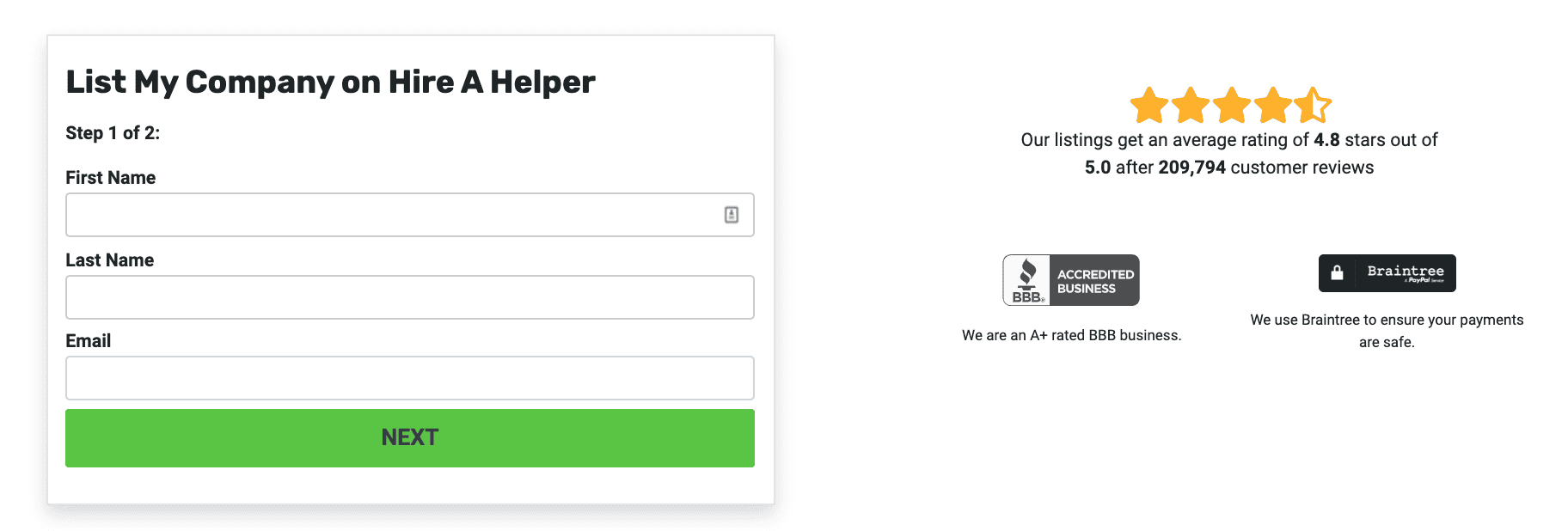How To Start a Business: 5 Steps to Opening a Legit Moving Company
Posted in: I'm a Mover, Business Basics, Moving Company Resources, RegulationsOn the surface, starting a moving company may look simple: get a truck, hire a reliable crew, and start finding customers.
But anyone who has actually started a moving company will tell you there’s a lot more to starting a moving company. (We’re talking about confusing stuff, like obtaining the proper licenses.)
Below, we’re going to tackle the potentially complicated process of getting your moving company on the map.
Business 101: The Four Business Types
Before you get started, you’ll want to familiarize yourself with the four basic company structures. Here are their descriptions from the Corporate Finance Institute:
- Sole Proprietorship
A sole proprietorship is the simplest business structure and involves one individual who is responsible for the day-to-day operations of the business. Also, from a tax perspective, the incomes and expenses of the business are included in the tax return of the owner.
The business is not required to file separate income tax forms from the owner since the business does not exist as a separate legal entity from its owner. The owner is required to file Form 1040, and the form must include Schedule C and Schedule SE for self-employment tax.
- Partnership
A partnership is a form of business structure that comprises two or more owners. It is the simplest form of business structure for a business with two or more owners. A partnership shares a lot of similarities with a sole proprietorship. For example, the business does not exist as a separate legal entity from its owners, and therefore, the owners and the entity are treated as one person.
When filing taxes, the profits and losses of the business are passed on to the partners, and each partner is required to report the information in Form 1065 with their personal tax returns. Also, partners are required to pay self-employment tax, depending on their share of the enterprise’s profits.
- Corporation
A corporation is a type of business structure that gives the entity a separate legal entity from its owners. It is complex and expensive to set up, and it requires the owners to comply with more tax requirements and regulations…
…When an organization intends to go public through the issue of common stock to the public, it must first be incorporated as a corporation. Corporations are required to pay both federal and state taxes, while the shareholders are required to disclose their dividend payments when filing their personal income taxes.
- LLC
A limited liability company (LLC) is a hybrid business structure that combines the best of both worlds, i.e., it possesses the characteristics of both partnerships and corporations. It provides personal liability protection to business owners while reducing tax and business requirements. The profits and losses of the business are passed through to the owners, and each business owner is required to include a share of the profits/losses in their personal tax returns.
Also, unlike an S-corporation, which is subject to a limit of 100 shareholders, there is no limit to the number of shareholders in a limited liability company.
You may need to make a decision before beginning the actual registration process. Though it’s very probable if you’re just starting out, we’re talking sole proprietorship or partnership status here.
The Five Major Steps To Starting a Moving Company
The process for registering and licensing your moving company involves five basic steps. Well, I say basic, but that doesn’t automatically mean easy. (Remember, we’re dealing with the government here!)
But just like moving someone out of their house goes one piece at a time, so goes the process for getting your moving company up and running.
Step 1: Fulfill your state’s permit and license requirements
This includes registering your business, obtaining tax identification numbers, and nailing down the necessary insurance. Click on your state and go directly to the people who can tell you exactly what forms you need to fill out for YOUR state.
Pro Tip: Right off the bat, determine whether you need a state license to operate as a moving company. Some states — Alaska, Arizona, Maine, Maryland, Delaware and DC — have in the past been delegated as states that do not outright require such licensing. But times change, so check!
Step 2: Obtain a “USDOT#” (U.S. Dept. of Transportation Number)
Simply put, if you are planning on operating across state lines, you will need a United States Department of Transportation number.
If your business will be conducted entirely within your own state, you may or may not need one. (Some states require them locally, others don’t.) The FMCSA breaks it all down here.
If you do need a USDOT# to operate legally in your state, you can go here to get started.
Note the government’s warning that… “Everyone that registers with FMCSA is required to understand and comply with all applicable Federal safety regulations before registering.”
Those safety regulations can be found here.
Step 3: Federal Motor Carrier Safety Administration (FMCSA) requirements for moving trucks
If your business is more than just labor and you plan to be operating a vehicle, you will need to become compliant with the Federal Motor Carrier Safety Administration (FMCSA).
Which registration and operational requirements you are subject to depends on whether you are operating interstate or intrastate (that means operating across at least two states, or inside just one). Either way, there will be requirements for you to fulfill. Some of them include:
- Having a USDOT#
- Getting a “safety rating”
- Minimum levels of insurance required
- Financial reporting requirements
- Mandated checklist of safety requirements for your vehicle(s)
- Having qualified drivers
The FMCSA lays out all these details and more over here.
The FMCSA also lists all the steps in the registration/application process (as well as information on state requirements, safety programs, and maintaining/updating your USDOT status down the road) right here.
Step 4: Check for government help for your small business
An important resource for starting any business (wherever or however you plan to operate) is the U.S. Small Business Administration (SBA).
Some things the SBA can help you with include:
- Government business loans
- Free business counseling
- Home & business disaster loans
- Federal government contracting
Check them out. Because when you’re starting a business, it never hurts to have extra help.
Step 5: Get listed on mover marketplaces and start generating reviews ASAP
After you’ve got your licenses, equipment, funding, and a crew, you are good to go!
But if you’re serious about generating customers and starting a real, you know, business, the best thing to get your company in front of potential customers is to list your website on free moving marketplaces. (If it’s a website that only lets verified customers review you instead of randos on the internet, that’s obviously better.)
And don’t ever pay anyone to be listed somewhere online — it should be free for your company if it’s legit.

After all, there’s no point in going through all this effort without putting your company online for people to find. What’s a moving company without people to move?






